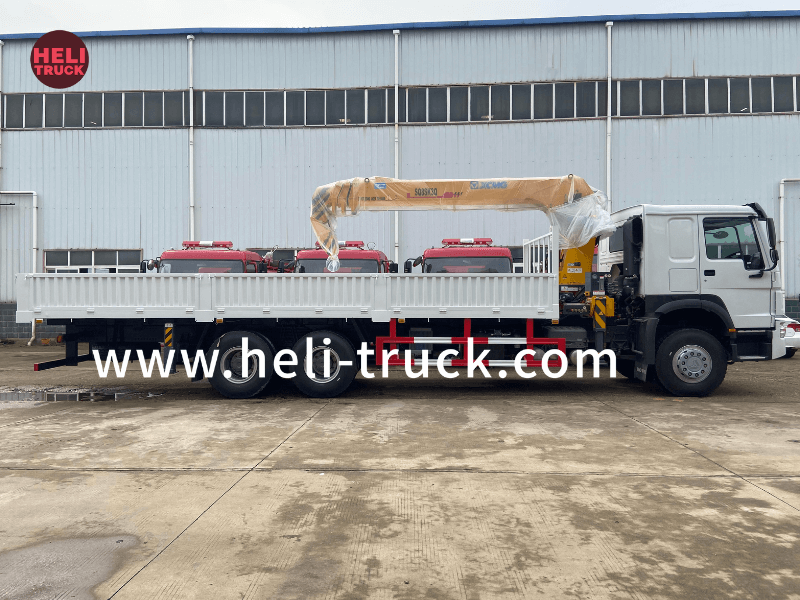Assessing the Environmental Impact of Vacuum Trucks Balancing Efficiency and Sustainability
Introduction:  Vacuum trucks, also known as vacuum tankers or vac trucks, are versatile vehicles that play a crucial role in various industries, including waste management, construction, and oil and gas. These heavy-duty trucks are specifically designed to suction and transport liquids, sludge, and solids from one location to another. While vacuum trucks provide essential services, it is important to assess their environmental impact to ensure sustainable practices in their usage. This article aims to explore the environmental implications of vacuum trucks, highlighting their benefits, challenges, and potential solutions, all in the pursuit of striking a balance between efficiency and sustainability. 1. Understanding Vacuum Trucks and Their Environmental Context: 1.1 What are Vacuum Trucks? 1.2 Application Areas and Importance 1.3 Environmental Concerns: Energy Consumption and Emissions 2. Examining the Environmental Impact of Vacuum Trucks: 2.1 Carbon Footprint: Energy Sources and Emissions 2.2 Air Pollution: Particulate Matters and Gaseous Emissions 2.3 Noise Pollution: Impact on Local Communities 2.4 Soil and Water Contamination: Spillage and Leakages 3. Strategies for Minimizing Environmental Impact: 3.1 Improvements in Energy Efficiency: Engine Technologies and Power Systems 3.2 Alternative Fuels: Transitioning to Renewable Energy Sources 3.3 Emission Control Systems: Catalytic Converters and Exhaust Filters 3.4 Noise Reduction Measures: Silencers and Soundproofing 3.5 Spillage Prevention and Leak Detection: Enhanced Safety Measures 3.6 Waste Management and Treatment: Responsible Disposal Practices 4. on the main page and Industry Standards: 4.1 International Regulations: Impact on Vacuum Truck Operations 4.2 Local and National Guidelines: Compliance and Enforcement 4.3 Certification and Best Practices: Promoting Responsible Usage 5. Case Studies: Successful Environmental Practices in Vacuum Truck Operations: 5.1 Waste Management Industry: Recycling and Reusing Materials 5.2 Oil and Gas Sector: Minimizing Spills and Contamination 5.3 Construction and Municipalities: Integrating Vacuum Trucks in Sustainable Practices 6. Future Outlook and Innovations: 6.1 The Role of Technology: Automation and Telematics 6.2 Electrification of Vacuum Trucks: Advancements and Challenges 6.3 Circular Economy Approach: Resource Recovery and Reuse 6.4 Collaboration and Knowledge Sharing: Industry and Stakeholder Engagement Conclusion: Vacuum trucks play a vital role in various industries, but it is crucial to understand and mitigate their environmental impact. By examining their carbon footprint, air and noise pollution, as well as spillage risks, we can identify strategies to minimize these effects. Improvements in energy efficiency, the adoption of alternative fuels, and the implementation of emission control systems are key steps towards achieving environmental sustainability. Additionally, regulatory frameworks and industry standards provide guidelines for responsible vacuum truck usage. Through case studies highlighting successful practices and future innovations, a more sustainable future for the vacuum truck industry can be envisioned. With a collective effort from industry stakeholders, vacuum trucks can continue to provide their essential services while minimizing their environmental impact.
Vacuum trucks, also known as vacuum tankers or vac trucks, are versatile vehicles that play a crucial role in various industries, including waste management, construction, and oil and gas. These heavy-duty trucks are specifically designed to suction and transport liquids, sludge, and solids from one location to another. While vacuum trucks provide essential services, it is important to assess their environmental impact to ensure sustainable practices in their usage. This article aims to explore the environmental implications of vacuum trucks, highlighting their benefits, challenges, and potential solutions, all in the pursuit of striking a balance between efficiency and sustainability. 1. Understanding Vacuum Trucks and Their Environmental Context: 1.1 What are Vacuum Trucks? 1.2 Application Areas and Importance 1.3 Environmental Concerns: Energy Consumption and Emissions 2. Examining the Environmental Impact of Vacuum Trucks: 2.1 Carbon Footprint: Energy Sources and Emissions 2.2 Air Pollution: Particulate Matters and Gaseous Emissions 2.3 Noise Pollution: Impact on Local Communities 2.4 Soil and Water Contamination: Spillage and Leakages 3. Strategies for Minimizing Environmental Impact: 3.1 Improvements in Energy Efficiency: Engine Technologies and Power Systems 3.2 Alternative Fuels: Transitioning to Renewable Energy Sources 3.3 Emission Control Systems: Catalytic Converters and Exhaust Filters 3.4 Noise Reduction Measures: Silencers and Soundproofing 3.5 Spillage Prevention and Leak Detection: Enhanced Safety Measures 3.6 Waste Management and Treatment: Responsible Disposal Practices 4. on the main page and Industry Standards: 4.1 International Regulations: Impact on Vacuum Truck Operations 4.2 Local and National Guidelines: Compliance and Enforcement 4.3 Certification and Best Practices: Promoting Responsible Usage 5. Case Studies: Successful Environmental Practices in Vacuum Truck Operations: 5.1 Waste Management Industry: Recycling and Reusing Materials 5.2 Oil and Gas Sector: Minimizing Spills and Contamination 5.3 Construction and Municipalities: Integrating Vacuum Trucks in Sustainable Practices 6. Future Outlook and Innovations: 6.1 The Role of Technology: Automation and Telematics 6.2 Electrification of Vacuum Trucks: Advancements and Challenges 6.3 Circular Economy Approach: Resource Recovery and Reuse 6.4 Collaboration and Knowledge Sharing: Industry and Stakeholder Engagement Conclusion: Vacuum trucks play a vital role in various industries, but it is crucial to understand and mitigate their environmental impact. By examining their carbon footprint, air and noise pollution, as well as spillage risks, we can identify strategies to minimize these effects. Improvements in energy efficiency, the adoption of alternative fuels, and the implementation of emission control systems are key steps towards achieving environmental sustainability. Additionally, regulatory frameworks and industry standards provide guidelines for responsible vacuum truck usage. Through case studies highlighting successful practices and future innovations, a more sustainable future for the vacuum truck industry can be envisioned. With a collective effort from industry stakeholders, vacuum trucks can continue to provide their essential services while minimizing their environmental impact.